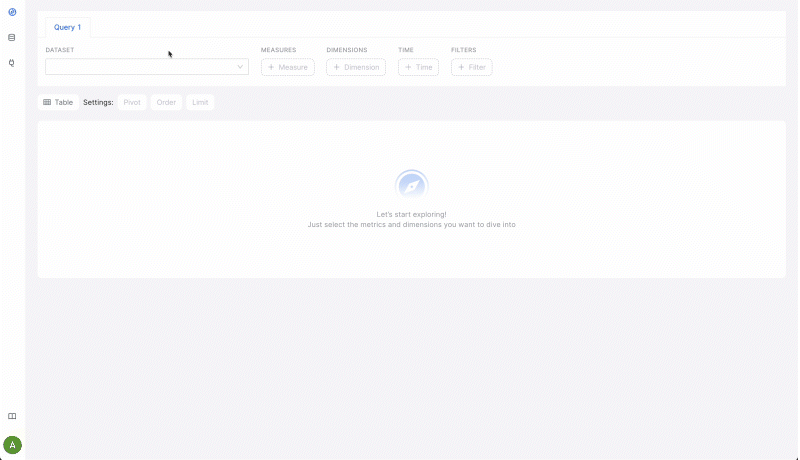Explore
Explore page provides users with a flexible way to explore all model-related data, whether as an aggregated view or exploring raw data and predictions.
For example:
Let's say you want to see the average age of people with a transaction (on which we've applied a fraud detection classification model) and break it down per device.

Once you've made your selections (for more information on basic selections, see below), click on the "Run" button to execute the query and generate the analysis results.
Basic explore selections
- Dataset - Select the dataset you want to explore.
- Measures - Select one or more measures you want to analyze. A measure is a given aggregation on top of one of the dataset fields. If you don't find the aggregation you're looking for, please contact our support team.
- Dimensions - You can choose one or more fields to be used as dimensions. Dimensions will break down the selected measures according to different distinct value groups in the selected dimensions.
- Time & Filters - Both Time and Filters enable you to define filters on the selected query.
Time will be applied specifically to time-related columns.
Additional explore selections
A few additional settings can be applied to the selected query included:
- Limit - Limit the results to the top X items. By default, the query applies a limit of 100. It is not recommended to allow limits above 10,000.
- Order - Given the selected measures, dimensions, and filters, you can define the order of the result set.
- Pivot - Change the result set layout and pivot between the x and y axes.
- Visualization - Based on the returned result set, users can choose whether to visualize it as one of the following options: Line, Area, Bar plot, and Table. By default, the result set will be charted as a Table, and these changes will rerun the query.
Querying raw data
Each dataset contains a "Record ID" column which is the dataset's key. If you would like to query the raw predictions (e.g., "Show me all predictions made yesterday"), this column will allow you to do so.
Select the "Record ID" field in the Dimension selection and then choose the relevant measures you want to see
(to see raw data, choose a measure like "AVG" (Average) on top of the desired field.
Another option will be to select all the required fields as dimensions.)

Sharing queries
All query details are automatically saved in the page URL.
You can share or save your URL and go back to it at any time to review the result without recreating the query.
Updated about 2 years ago
